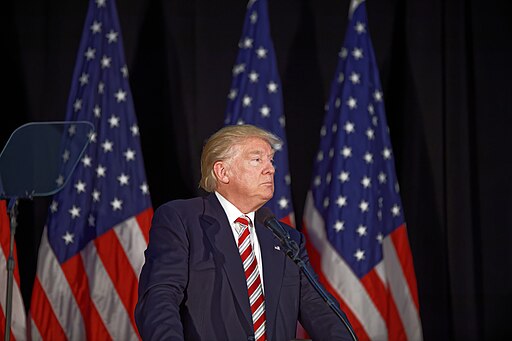President Donald Trump has imposed new tariffs, escalating trade tensions with Canada, Mexico, and China. Effective Tuesday, the U.S. will implement a 25% tariff on imports from Canada and Mexico, with Canadian energy imports facing a reduced 10% levy, while China will see a 10% tariff increase.
Trump announced the move on Truth Social, citing the International Emergency Economic Powers Act (IEEPA) as justification. He linked the tariffs to efforts to curb illegal immigration and drug trafficking, particularly fentanyl, which he claims is endangering American lives. However, analysts warn these tariffs may drive up consumer prices and disrupt supply chains.
The administration has not specified when these tariffs will be lifted, stating only that they will remain until the flow of undocumented immigrants and illegal drugs into the U.S. stops. Trump also hinted at future tariffs on semiconductors, oil, and gas, with February 18 identified as a key date for further actions. Additional duties on steel, aluminum, and copper are planned, reinforcing the trade protectionism strategy he claims saved the U.S. steel industry.
Trump also suggested major tariff actions on Europe and criticized America’s reliance on income tax over tariffs, questioning its effectiveness. The announcement triggered a market downturn, with the Dow dropping 0.75%, S&P 500 down 0.5%, and NASDAQ slipping 0.28%. Automakers GM (NYSE:GM), Ford (NYSE:F), and Stellantis (NYSE:STLA), with strong ties to Canada and Mexico, are expected to face major challenges.
As the global trade war intensifies, businesses and investors are bracing for potential economic disruptions and retaliatory measures from affected nations.



 Sydney Bondi Beach Terror Attack Kills 16, Sparks Gun Law and Security Debate
Sydney Bondi Beach Terror Attack Kills 16, Sparks Gun Law and Security Debate  Special Prosecutor Alleges Yoon Suk Yeol Sought North Korea Provocation to Justify Martial Law
Special Prosecutor Alleges Yoon Suk Yeol Sought North Korea Provocation to Justify Martial Law  Korea Zinc Plans $6.78 Billion U.S. Smelter Investment With Government Partnership
Korea Zinc Plans $6.78 Billion U.S. Smelter Investment With Government Partnership  U.S. Soldiers Killed in ISIS Attack in Palmyra, Syria During Counterterrorism Mission
U.S. Soldiers Killed in ISIS Attack in Palmyra, Syria During Counterterrorism Mission  Wall Street Futures Slip as Tech Stocks Struggle Ahead of Key US Economic Data
Wall Street Futures Slip as Tech Stocks Struggle Ahead of Key US Economic Data  Global Leaders Condemn Deadly Antisemitic Shooting at Sydney’s Bondi Beach During Hanukkah
Global Leaders Condemn Deadly Antisemitic Shooting at Sydney’s Bondi Beach During Hanukkah  U.S. Dollar Slips Near Two-Month Low as Markets Await Key Jobs Data and Central Bank Decisions
U.S. Dollar Slips Near Two-Month Low as Markets Await Key Jobs Data and Central Bank Decisions  Belarus Pledges to Halt Smuggling Balloons Into Lithuania
Belarus Pledges to Halt Smuggling Balloons Into Lithuania  Jimmy Lai Convicted Under Hong Kong National Security Law in Landmark Case
Jimmy Lai Convicted Under Hong Kong National Security Law in Landmark Case  Gold Prices Slip Slightly in Asia as Silver Nears Record Highs on Dovish Fed Outlook
Gold Prices Slip Slightly in Asia as Silver Nears Record Highs on Dovish Fed Outlook  Japan Business Sentiment Hits Four-Year High, Boosting Expectations of BOJ Rate Hike
Japan Business Sentiment Hits Four-Year High, Boosting Expectations of BOJ Rate Hike  Ireland Limits Planned Trade Ban on Israeli Settlements to Goods Only
Ireland Limits Planned Trade Ban on Israeli Settlements to Goods Only  Gold and Silver Prices Dip as Markets Await Key U.S. Economic Data
Gold and Silver Prices Dip as Markets Await Key U.S. Economic Data  Trump’s Rob Reiner Remarks Spark Bipartisan Outrage After Tragic Deaths
Trump’s Rob Reiner Remarks Spark Bipartisan Outrage After Tragic Deaths  China’s Small Bank Consolidation Struggles as Profits Fall and Risks Persist
China’s Small Bank Consolidation Struggles as Profits Fall and Risks Persist  Judge Orders Return of Seized Evidence in Comey-Related Case, DOJ May Seek New Warrant
Judge Orders Return of Seized Evidence in Comey-Related Case, DOJ May Seek New Warrant  South Korea Extends Bond Market Stabilization Measures Amid Rising Financial Risks
South Korea Extends Bond Market Stabilization Measures Amid Rising Financial Risks 































